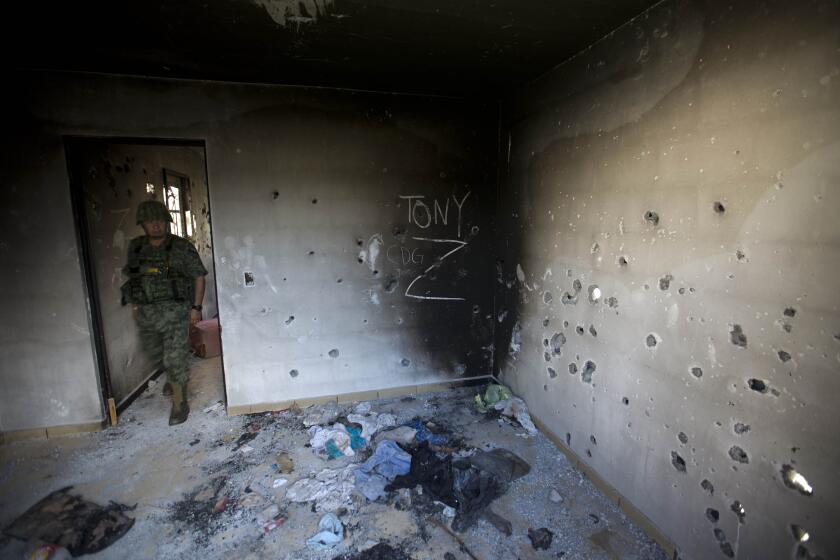Besieged Syrian suburbs receive international food aid for the first time in years
The excitement in the spokeswoman’s voice was palpable even over the shaky phone connection.
“We are entering Duma now,” Khawla Mattar reported Friday from war-torn Syria, where she works for the United Nations envoy there. “It’s the first time we’ve been there since 2014.”
The Damascus suburb, under siege by government troops, was finally receiving badly needed food aid. A day earlier, U.N. and Syrian Red Crescent convoys delivered food to the nearby suburb of Daraya, which is held by rebels but had been cut off by government troops since 2012.
“These are breakthroughs,” Mattar said.
Sieges have been an important tactic in the five-year Syrian crisis, used primarily by forces loyal to President Bashar Assad but also by rebels vowing to end his rule.
Typically, troops set up roadblocks and checkpoints to control the movement of people and goods in the area. Massive shortages of food and other items have resulted, along with the rise of smuggling operations and profiteers who prey on desperate local populations.
In May, the International Syria Support Group, a 20-nation coalition working to end the war in Syria, vowed to start air drops by June 1 if the government did not allow humanitarian supplies to enter freely.
On Thursday, U.N. mediator Staffan de Mistura said at a news conference in Geneva that the U.N. had approval to enter 15 out of 17 besieged areas. Mattar said that permission had also been granted for deliveries to a 16th area, the suburb of Waer in Homs province.
The convoy to Daraya consisted of nine trucks that delivered medicine, hygiene kits and a month’s supply of food for 2,400 people, the U.N. said. The food came in individual parcels, each containing rice, lentils, chickpeas, sugar, bulgur wheat and cooking oil.
The U.N. World Food Program said it had also delivered “wheat flour bags to feed the entire population for a month.”
A once vibrant town of roughly 78,000 people and the supposed site of the apostle Paul’s epiphany on his way to Damascus, Daraya has witnessed some of the heaviest fighting in the Syrian war. The U.N. estimates that only 4,000 people remain there, though activists say there are twice that many.
“The assistance is not enough,” Malak Rifaii, an activist on the anti-government Local Council of Daraya, said in a phone interview Friday. “It won’t be possible to give a food parcel for every person here, so we’ll have to distribute less to the families to it can be enough for everyone.”
“For the person who in the last period has only had soup they will find it great,” he said. “It’s not a quantum leap but it’s definitely a good first step.”
By U.N. calculations, the food deliveries covered only 60% of Daraya’s needs. Mattar said the Syrian government “promised that whatever we had brought in last night we would be able to top up before the end of Ramadan.”
But in a sign of the fragility of the arrangement, the U.N. reported that government forces shelled Daraya even as the aid convoy entered the town.
“The shelling started and we had to intervene with the coordination center, Russia and the Americans,” Mattar said. The U.S. and Russia have a joint operation for monitoring the war.
Rifaii said that clashes continued Friday, with government forces dropping barrel bombs and firing missiles on the town.
Bulos is a special correspondent.
More to Read
Sign up for Essential California
The most important California stories and recommendations in your inbox every morning.
You may occasionally receive promotional content from the Los Angeles Times.










